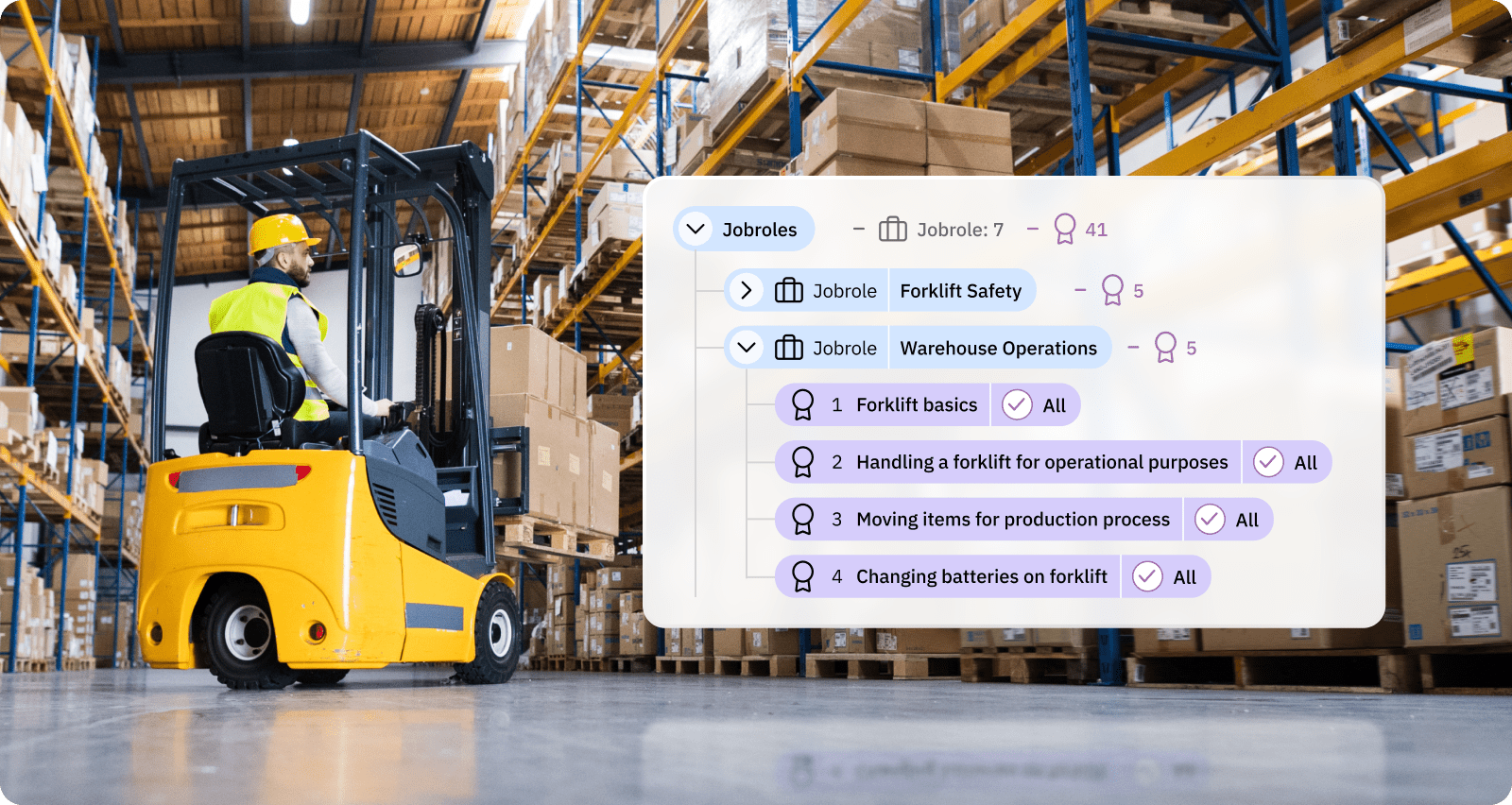How to identify and track workforce skills
Understanding and tracking workforce skills is essential for compliance, productivity, and workforce planning. This article explains how to identify key hard, soft, and digital skills, perform a skills gap analysis, and use real-time skills management software to stay compliant and audit-ready.

Workforce skills shape how well your organization runs. Still, only 47% of employees believe they have the right skills to excel in their role [1]. This means that there may be a disconnect between what your employees can and should be able to do.
It also means you may be missing key information about your team’s capabilities that prevent you from planning properly, creating targeted training initiatives, or meeting compliance requirements. In this article, we’ll explain what workforce skills are, give examples, and show how to identify and track them, plus highlight how AG5’s skills management software can help you do so.
Copied

What are workforce skills?Copied
Workforce skills are the capabilities your employees use to do their jobs. This includes both hard and soft skills.
Hard skills are job-specific, like operating a forklift or using SAP. Soft skills are broader, like communication, leadership, or teamwork. Especially in industries like manufacturing, logistics, and healthcare, having the right mix of both is essential.
Examples of workforce skillsCopied
There’s no single list of workforce skills that fits every organization, but common skills related to the frontline workforce will include a mix of hard (or technical), soft, and digital skills.
Examples of hard skills include:
- Forklift operation
- Microsoft Excel or ERP system use
- Welding or machine calibration
- CPR certification or GMP training
Soft skills
Soft skills are personal traits that affect how people work with others and handle tasks. They’re harder to measure but just as important, especially for teamwork, communication, and problem-solving.
Examples of soft skills include:
- Verbal communication
- Time management
- Adaptability
- Conflict resolution
Digital skills
Digital skills involve using software, systems, and devices to do everyday tasks like entering data, accessing cloud tools, or reading performance dashboards.
Additional examples of digital skills include:
- Usage of CRM tools
- Using handheld scanners or mobile apps
- Interpreting data analytics
How to perform a workforce skills gap analysisCopied
A skills gap analysis helps you compare the skills your employees have now with the ones they need. This, in turn, can help you develop smarter training or recruitment initiatives and avoid costly downtime, as well as achieve business goals and create a positive work culture for employees. [2]
You can read our article “How to conduct a skills gap analysis” for a more in-depth guide on how to perform one.Here, however, is a brief walkthrough of an effective skills gap analysis.
- List required skills. Start with job descriptions or compliance needs. Talk to team leads and managers to validate them
- Assess current skills. Use assessments, certifications, manager reviews, or self-evaluations
- Compare and highlight skill gaps. See where skills fall short: by role, team, department, and (if applicable) site
- Prioritize action. Focus on skill gaps that affect safety, compliance, or productivity first
- Create a plan. Use training, hiring, or role changes to close the gaps
Ways to identify and track workforce skills Copied
Identifying and tracking workforce skills isn’t a one-and-done task. It instead requires a system that can adapt and grow with your workforce. Options here include:
- Skills matrices. Visual tools to map skills across teams or individuals
- LMS integration. Track learning and training completion over time with
- Surveys and assessments. Periodic reviews help keep records current
- Certifications and licenses. Keep logs of who is certified for what – and when they expire
- Digital platforms. Tools like AG5 offer live updates, alerts, and reporting dashboards. They also alleviate the burden of manual tracing, which are error-prone and can lead to compliance issues or unsafe work environments
Why workforce skills management is critical for regulatory complianceCopied
Many industries require proof of training and qualifications. OSHA, ISO, GMP, and other standards often require up-to-date records of workforce competencies. If you can’t show who is qualified for specific tasks, you risk financial penalties or workplace accidents.
Skills management – and skills management platforms – reduce this risk. They alert you to upcoming renewals, help assign the right people to the right jobs, and simplify audits.
Without a system in place, staying compliant becomes harder as regulations evolve – a challenge with which 66% of executives are struggling. [3]

How AG5 helps track and visualize workforce skills in real timeCopied
AG5’s skills management platform gives you a real-time view of your team’s capabilities, without the chaos of spreadsheets.
Live skills matrices. Know instantly who’s qualified to do what across all locations
- Compliance tracking. Get alerts before certifications expire. Prove compliance instantly during audits
- Faster onboarding. Tailor checklists by role, so new hires can ramp up faster
- Training integration. Plug into your LMS to sync learning and upskilling data
- Data-driven insights. Spot gaps early and plan training or hiring accordingly.
- Employee transparency. Let staff see their skill profiles and career paths. This boosts engagement and retention
AG5 makes it easy to see what your workforce is capable of and what still needs work. Want a custom look at how this could work in your organization? Schedule a free, live, 15-minute demo to see AG5 in action.
Sources Copied
- Change view: Table
-
APA
| # | Source title | Description | Publication | Retrieved | Source URL |
|---|---|---|---|---|---|
| 1 | Employee Upskilling Is Vital in Rapidly Evolving Job Market | Gallup | November 19, 2024 | November 12, 2025 | https://www.gallup.com/workpla.. |
| 2 | Building tomorrow’s skills-based organization | Deloitte | November 2, 2022 | November 12, 2025 | https://www.deloitte.com/globa.. |
| 3 | Closing the experience gap | Deloitte | March 24, 2025 | November 12, 2025 | https://www.deloitte.com/us/en.. |

